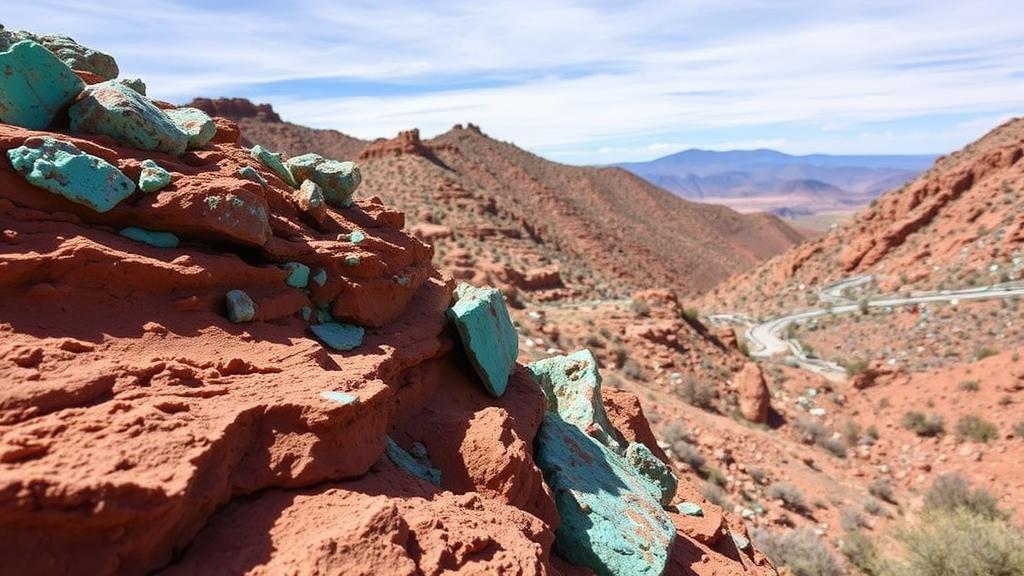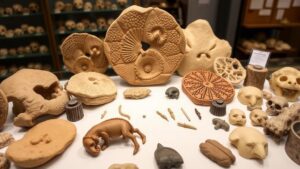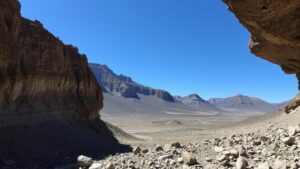Investigating turquoise outcrops in the mining districts of the Burro Mountains, prized for their rich colors.
Investigating Turquoise Outcrops in the Mining Districts of the Burro Mountains
The Burro Mountains in New Mexico are renowned among rockhounds and mineral collectors for their vibrant turquoise outcrops. This area provides a unique opportunity for enthusiasts to explore the geological features that contain this prized mineral. Understanding the formation, sourcing, and characteristics of turquoise in this region is crucial for anyone serious about adding to their collection.
The Formation of Turquoise
Turquoise is a hydrous phosphate of copper and aluminum, often occurring in a blue-to-green color range due to the varying amounts of copper and iron present in its composition. formation process involves the alteration of pre-existing minerals, often in arid environments rich in copper-bearing solutions. In the Burro Mountains, turquoise can often be found in veins or nodules within host rocks such as limestones and sandstones.
Key scientific data about turquoise often includes:
- Chemical formula: CuAl6(PO4)4(OH)8·4H2O
- Hardness on Mohs scale: 5-6
- Specific gravity: 2.7-3.9
Where to Find Turquoise in the Burro Mountains
The Burro Mountains are rich in mineral deposits, most notably in mining districts such as the historic site of the Burro Mountains mining district, which dates back to the late 1800s. Specific locations where turquoise has been found include:
- Turquoise Hill
- Gila District
- Black Mountain
These areas are often characterized by exposed cliffs and gravel deposits, making it easier to spot the vibrant blue-green hues of turquoise against the stark landscape of the mountains.
Best Practices for Collecting Turquoise
For rockhounds and mineral collectors, ethical and responsible collecting practices are paramount. Here are some tips to enhance your experience while minimizing the impact on the environment:
- Research and obtain necessary permits, as many mining areas have restrictions on collecting.
- Wear appropriate gear, including sturdy footwear and gloves, to ensure safety while navigating rocky terrains.
- Practice minimal disturbance techniques; collect only what you can responsibly carry, leaving the environment as undisturbed as possible.
Evaluating Turquoise Quality
Not all turquoise is created equal, and its value is influenced by several factors. When evaluating turquoise, collectors should consider:
- Color: The most prized turquoises exhibit a rich, uniform blue, often referred to as robins egg blue. Variants leaning toward green may not be as valuable but still possess aesthetic charm.
- Matrix: Turquoise can also contain matrix lines or spots from the host rock. Some collectors prefer the webbed appearance of matrix-enhanced turquoise, while others opt for a solid stone.
- Hardness: The best turquoise should have a hardness of at least 5, indicating its durability for jewelry-making and display.
The Importance of Preservation
As collectors scour the Burro Mountains for turquoise, it is essential to recognize the importance of preservation. Turquoise outcrops contribute to the biodiversity and geology of the area. So, an increasing number of regions advocate for conservation efforts.
Engaging with local rockhounding clubs and geological survey groups can help foster a community dedicated to ethical collecting and educating new enthusiasts on sustainable practices.
Conclusion
The Burro Mountains present an ideal expedition for rockhounds and mineral collectors seeking the stunning beauty of turquoise. By adhering to responsible collecting practices and appreciating the geology of this region, collectors can contribute to the preservation of natural resources while enriching their personal collections. Armed with this knowledge, you are now ready to embark on an exciting adventure to uncover the breathtaking turquoise of the Burro Mountains.



